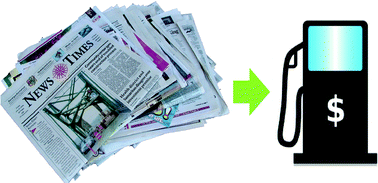Producing bioethanol from various wastes is a promising strategy to meet part of the transport energy demand and also to contribute to waste management. Waste papers (newspaper, office paper, magazines and cardboard in this work) with their 50% to 70% carbohydrate content are potential raw materials for bioethanol production. From both technical and economic aspects, bioethanol production processes for various waste papers were evaluated in this study. High-solids loading (15% w/w) enzymatic hydrolyses using two enzyme alternatives (Celluclast 1.5 L supplemented with Novozyme 188 and Cellic Ctec 1) achieved glucan conversion efficiencies from waste papers of 50% to 76%. Base case process models developed using these experimental data were then applied to an economic analysis to determine the minimum ethanol selling price (MESP) for bioethanol derived from the waste papers using a discounted cash flow method. The effects of several processing parameters: alternative product recovery processes, enzyme loading, enzymatic hydrolysis residence time and two enzyme alternatives on the MESP are explored. Bioethanol produced from cardboard (using Cellic Ctec 1) resulted in the lowest MESP. Two state-of-the-art technologies, dilute acid pre-treatment on office paper and oxidative lime pre-treatment on newspaper, were also investigated. This study suggests that bioethanol production from waste papers is feasible and profitable from both technical and economic points of view.

You have access to this article
 Please wait while we load your content...
Something went wrong. Try again?
Please wait while we load your content...
Something went wrong. Try again?


 Please wait while we load your content...
Please wait while we load your content...